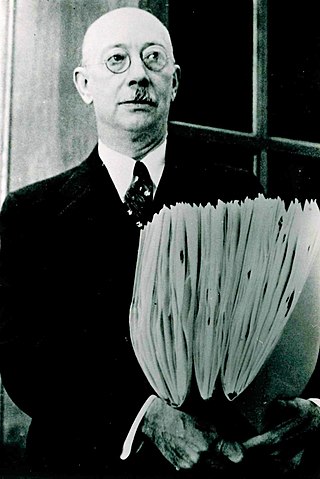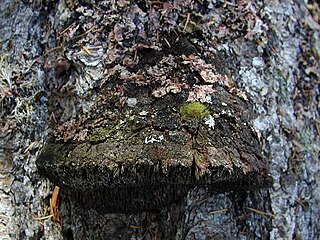| Phialopsis | |
|---|---|
| Scientific classification | |
| Domain: | Eukaryota |
| Kingdom: | Animalia |
| Phylum: | Cnidaria |
| Class: | Hydrozoa |
| Order: | Leptothecata |
| Family: | Eirenidae |
| Genus: | Phialopsis Torrey, 1909 |
Phialopsis is a genus of hydrozoans in the family Eirenidae.
| Phialopsis | |
|---|---|
| Scientific classification | |
| Domain: | Eukaryota |
| Kingdom: | Animalia |
| Phylum: | Cnidaria |
| Class: | Hydrozoa |
| Order: | Leptothecata |
| Family: | Eirenidae |
| Genus: | Phialopsis Torrey, 1909 |
Phialopsis is a genus of hydrozoans in the family Eirenidae.
The genus contains the following species: [1]

John Torrey was an American botanist, chemist, and physician. Throughout much of his career, he was a teacher of chemistry, often at multiple universities, while he also pursued botanical work, focusing on the flora of North America. His most renowned works include studies of the New York flora, the Mexican Boundary, the Pacific railroad surveys, and the uncompleted Flora of North America.

The Torrey pine is a rare pine species in California, United States. It is a critically endangered species growing only in coastal San Diego County, and on Santa Rosa Island, offshore from Santa Barbara in Santa Barbara County. The Torrey pine is endemic to the California coastal sage and chaparral ecoregion.

The Polyporaceae are a family of poroid fungi belonging to the Basidiomycota. The flesh of their fruit bodies varies from soft to very tough. Most members of this family have their hymenium in vertical pores on the underside of the caps, but some of them have gills or gill-like structures. Many species are brackets, but others have a definite stipe – for example, Polyporus badius.

Henry Allan Gleason (1882–1975) was an American ecologist, botanist, and taxonomist. He was known for his endorsement of the individualistic or open community concept of ecological succession, and his opposition to Frederic Clements's concept of the climax state of an ecosystem. His ideas were largely dismissed during his working life, leading him to move into plant taxonomy, but found favour late in the twentieth century.

Echinodontium is a genus of fungi in the family Echinodontiaceae. The genus was published by American mycologist Job Bicknell Ellis in 1900, who described it thus: "Differs from Hydnum in the thick, woody pileus of Fomes and the teeth beset with spines, as in Mucronophorus and Hymenochaete". The type species, Echinodontium tinctorium, is commonly known as the "indian paint fungus" owing to its traditional use for bodypainting.

Fred Jay Seaver was an American mycologist. He worked at the New York Botanical Garden for 40 years, initially as the Director of Laboratories (1908–1911), then as the Curator (1912–1943), and finally as Head Curator (1943–1948). Between 1907 and 1909 he issued two exsiccatae, North Dakota Fungi and Ascomycetes and lower fungi, the later with G. W. Wilson. He was also an editor of the journal Mycologia between 1909 and 1947. In 1928, Seaver published North American Cup-fungi (Operculates), which was expanded with a supplement in 1942 and a second volume in 1951, titled North American Cup-fungi (Inoperculates).

Suaeda nigra, often still known by the former name Suaeda moquinii, is a species of flowering plant in the amaranth family, known by the vernacular names bush seepweed or Mojave sea-blite.
Howard James Banker was an American mycologist. He received his PhD from Columbia University in 1908. Banker was an associate editor of the journal Mycologia starting from its establishment in 1909, until it became the official publication of the Mycological Society of America in 1933. He published several papers in the journal, including a revision of the North American Hydnaceae, which discussed 62 species in 10 genera. Banker died at his home in Huntington, New York, in 1940. The genus Bankera is named after him.

Edwin Butterworth Mains (1890–1968) was an American mycologist. He was known for his taxonomic research on the rust fungi (Pucciniomycetes), the genus Cordyceps, and the earth tongues (Geoglossaceae).

Eudendrium is a large genus of hydroids (Hydrozoa), one of two in the family Eudendriidae. These animals are marine cnidarias in the family Eudendriidae.

Anna Murray Vail was an American botanist and the first librarian of the New York Botanical Garden. She was a student and collaborator of botanist and geologist Nathaniel Lord Britton, with whom she helped to found the New York Botanical Garden.

Elias Judah Durand was an American mycologist, and botanist. He was one of the foremost American experts on the discomycetes.
Phaeosaccion is a genus of algae with monostromatic tubular to saccate thalli, up to 20 centimetres (7.9 in) long and to 2 centimetres (0.79 in) wide. It is the sole genus in the family Phaeosaccionaceae. It is olive brown and resembles young plants of Scytosiphon. The sole species in the genus is Phaeosaccion collinsii, a species of marine algae. It was first identified in a publication by W.G. Farlow in the article Notes on New England algae published in Bulletin of the Torrey Botanical Club in 1882. It was named in honor of Frank Shipley Collins. Phaeosacchion collinsii is red listed in Iceland as a vulnerable species (VU).
Willard Webster Eggleston was an American botanist, employed by the United States Department of Agriculture Bureau of Plant Industry. He graduated from Dartmouth College in 1891 with a Bachelor of Science degree. In his work on the taxonomy of Crataegus, now known to be complicated by apomixis, polyploidy, and hybridization, he aimed to simplify, counteracting the proliferation of species names that other botanists had produced.

Pachycerianthus is a genus of marine tube-dwelling anemones in the family Cerianthidae.

Scrippsia is a genus of hydrozoans in the family Corynidae. It is monotypic with only one species, Scrippsia pacifica.
Eirene is a genus of hydrozoans in the family Eirenidae.

Eucheilota is a genus of cnidarians belonging to the family Lovenellidae.
Botruanthus is a genus of cnidarians belonging to the family Botrucnidiferidae.
Eutimalphes is a genus of hydrozoans in the family Eirenidae.